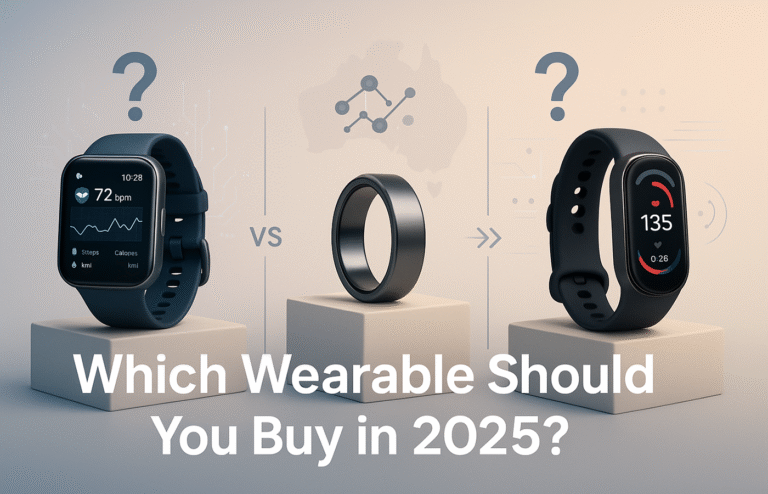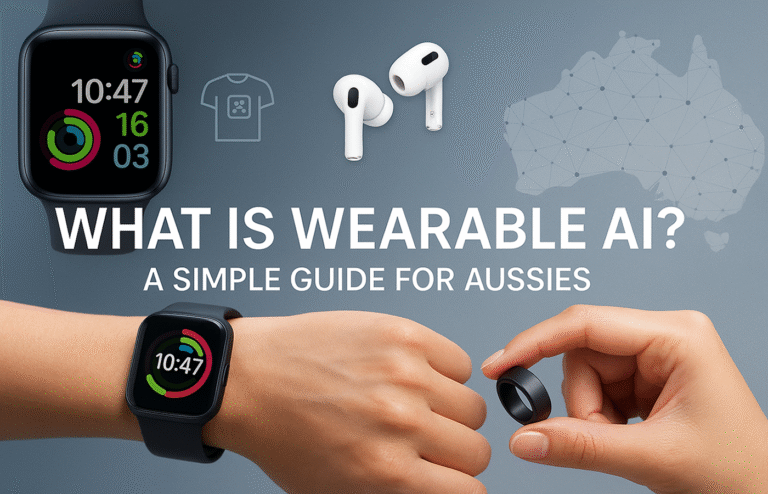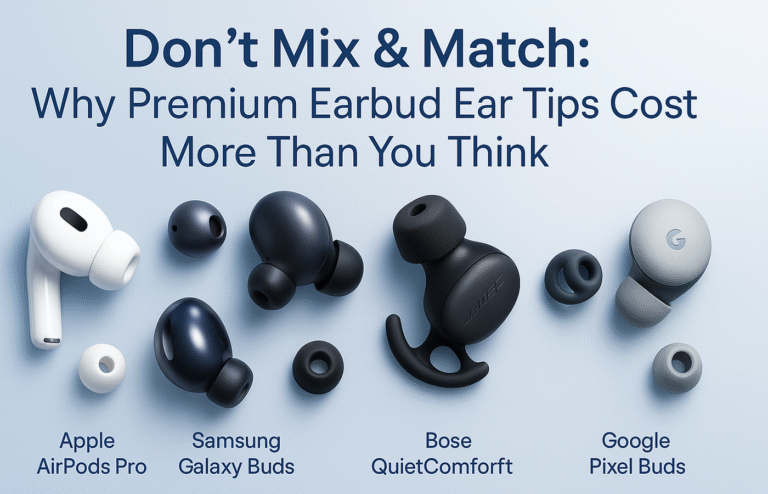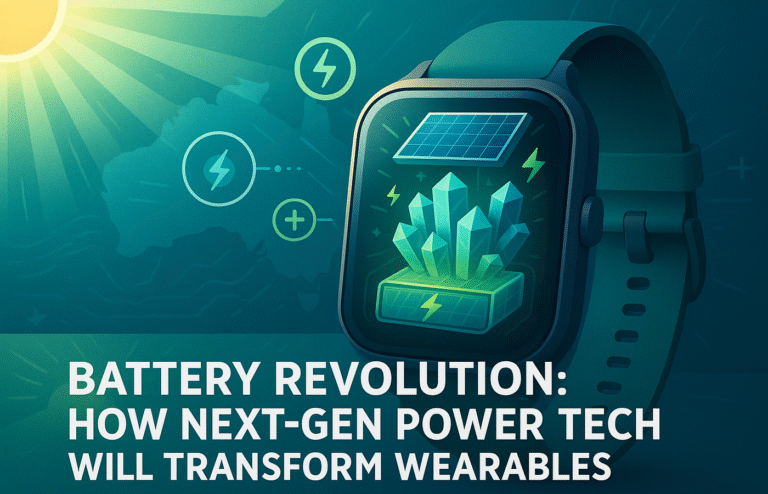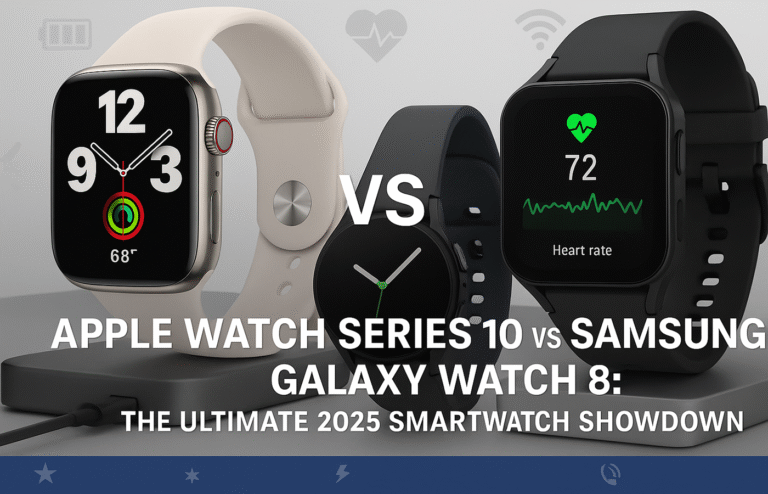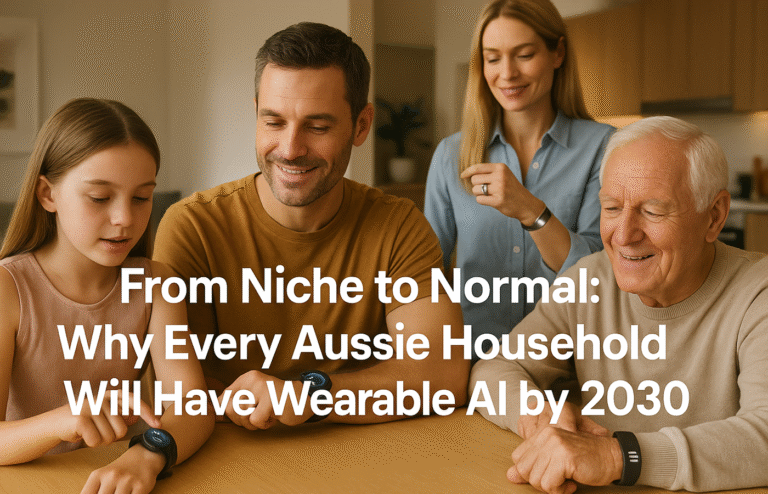Australia’s Wearable Revolution: Smart Rings, Rugged Watches, and Major Product Launches
Australia’s wearable market transformed through groundbreaking launches specifically tailored to local lifestyle and environmental needs, establishing the country as a priority market.
Major Launches:
● Samsung Galaxy Ring: $699 AUD with exclusive 30-day satisfaction guarantee, making Australia first in Southeast Asia/Oceania
● Garmin Instinct 3 Series: AMOLED models from $829, solar models from $729 with Australian-optimised UV performance
● Apple Watch Series 10: $649 AUD with enhanced emergency services integration and My Health Record compatibility
Australian Adaptations:
● Devices optimised for extreme climate conditions with enhanced UV tracking and heat stress monitoring
● Improved integration with local services including Bureau of Meteorology and major transport systems
● Cellular plans expanded by Telstra with better remote area coverage for outdoor lifestyle needs
Market Evolution: Local distribution centres improve delivery times whilst healthcare partnerships with private insurers offer device incentives.
Australia’s Wearable Revolution: Smart Rings, Rugged Watches, and Game-Changing Launches
Australia’s wearable technology scene has transformed dramatically over recent months, with groundbreaking product launches reshaping how we think about health monitoring, fitness tracking, and everyday connectivity. From Samsung’s historic smart ring debut to Garmin’s rugged innovations and Apple’s continued market leadership, Australian consumers now have access to cutting-edge wearable technology that’s specifically tailored to our unique lifestyle and environmental needs.
This comprehensive overview examines the most significant developments in Australia’s wearable market, exploring what these changes mean for consumers and where the industry is heading next.
Samsung Makes History with Australia’s First Major Smart Ring Launch
Samsung’s Galaxy Ring has officially launched in Australia at $699 RRP, available exclusively through Samsung.com.au and Samsung Experience Stores. This launch represents a pivotal moment for Australia’s wearable market, as we become the first region in Southeast Asia and Oceania to receive Samsung’s flagship smart ring technology.
The Galaxy Ring’s Australian debut comes with several unique features designed specifically for our market. Most notably, Samsung offers a generous 30-day “extended change of mind” policy exclusive to Australia, making us the only market globally where Samsung has introduced this satisfaction guarantee. This consumer-friendly approach acknowledges the challenge of purchasing wearable technology online and demonstrates Samsung’s confidence in their product.
Beyond the generous return policy, the Galaxy Ring addresses practical Australian concerns. The device integrates seamlessly with Samsung Health, providing localised health insights that consider our unique climate conditions and lifestyle patterns. Its seven-day battery life means users won’t need to worry about frequent charging during extended outback adventures or busy work schedules.
The smart ring category introduces an entirely new way to monitor health metrics without the bulk of traditional smartwatches. With its titanium construction and water resistance ratings of 10ATM and IP68, the Galaxy Ring is built to withstand Australia’s harsh environmental conditions whilst delivering continuous health monitoring.
Garmin Revolutionises Rugged Wearables with Instinct 3 Series
Garmin’s Instinct 3 Series launched with AMOLED models starting at $829 RRP and solar charging models from $729 RRP, bringing premium display technology to the company’s most affordable outdoor-focused range. This represents Garmin’s most significant update to their popular rugged smartwatch line, offering Australian adventurers genuine choice between cutting-edge visuals and unlimited battery life.
The introduction of AMOLED displays alongside traditional solar-powered options provides remarkable flexibility. Whilst AMOLED models deliver up to 24 days of battery life in smartwatch mode, the solar variants can achieve unlimited operation with sufficient sunlight exposure. For Australian users, this solar capability proves particularly valuable given our abundant sunshine and outdoor lifestyle.
What sets the Instinct 3 apart is its Australian-specific optimisation. The enhanced solar lens technology performs exceptionally well in our high-UV environment, making these devices ideal for extended outback adventures, mining operations, and outdoor work common across Australia. Additionally, the built-in LED flashlight across all models provides practical utility for users who frequently work or exercise in low-light conditions.
The Instinct 3 Tactical Edition followed in April, with AMOLED models priced at $1,099 RRP and solar models starting at $929 RRP. This specialised variant includes advanced features like night vision compatibility and rucking activity profiles, specifically targeting Australia’s military, mining, agriculture, and emergency services sectors.
Apple Maintains Premium Leadership Through Strategic Evolution
Whilst Apple didn’t launch entirely new Watch models during this period, the Apple Watch Series 10 continues performing strongly in Australia at $649 RRP. Apple’s strategy has shifted toward software innovation and enhanced integration with Australian services, maintaining their premium market position through ecosystem advantages rather than hardware refreshes.
The company’s focus on Australian-specific integration proves compelling. Apple Pay works seamlessly with major Australian financial institutions and transport systems, whilst the Watch’s emergency features have been optimised for our conditions. Enhanced GPS accuracy in remote areas and improved emergency calling capabilities designed for Australian emergency services demonstrate Apple’s commitment to local market needs.
Apple Health has also expanded integration with Australian healthcare providers, enabling easier sharing of health data with medical professionals and better support for Australia’s My Health Record system. These developments strengthen Apple’s position in the health-focused wearable segment.
Software Updates Transform Existing Devices
Beyond hardware launches, significant software updates have enhanced existing devices across all major platforms. Samsung Health introduced Australian-specific health insights, including seasonal adjustment recommendations and local air quality integration for major cities. These updates acknowledge that health monitoring needs vary by geography and climate.
Garmin Connect has improved route planning specifically for Australian conditions, with enhanced heat management recommendations and better integration with Bureau of Meteorology data. These features prove particularly valuable during Australia’s extreme weather seasons, helping users plan safer outdoor activities.
Meanwhile, Apple Health’s expanded integration with Australian healthcare providers represents a significant step toward comprehensive health ecosystem integration. This development particularly benefits users who want to share fitness and health data with their medical professionals.
Market Dynamics and Consumer Behaviour Shifts
The smart ring category’s introduction has prompted interesting competitive responses across the industry. Traditional fitness tracker manufacturers are reassessing their product strategies, whilst established smartwatch brands explore complementary form factors rather than direct competition.
Australian consumers demonstrate preferences that differ from global trends. Recent market data reveals stronger demand for extended battery life devices, reflecting our outdoor lifestyle and remote work requirements. Health monitoring priorities also align with local health challenges, particularly enhanced UV exposure tracking and heat stress monitoring capabilities.
Payment integration has evolved from optional to essential for most Australian wearable buyers. Contactless payment capability now influences purchase decisions significantly, reflecting our rapid adoption of digital payment methods.
Infrastructure and Partnership Developments
Telstra has expanded wearable device support with improved data plans for cellular-enabled smartwatches and enhanced coverage optimisation. This development addresses one of the key barriers to adopting cellular wearables in Australia’s vast geographic area.
Healthcare partnerships have grown significantly, with several private health insurers now offering wearable device incentives and discounts. These programmes recognise wearables’ potential to support preventive healthcare and reduce long-term medical costs.
Enterprise adoption has accelerated, particularly in mining and construction sectors where wearables provide safety monitoring and communication capabilities in challenging environments. This trend reflects Australia’s unique industrial landscape and workplace safety requirements.
Supply Chain and Local Service Improvements
Global supply chain improvements have positively impacted Australian wearable availability. Most major launches now feature simultaneous or near-simultaneous Australian releases, reducing grey market pressure that previously affected local retailers.
Major manufacturers have established or expanded Australian distribution centres, significantly improving shipping and delivery times. Samsung’s Galaxy Ring, for example, ships from local facilities rather than requiring international shipping. Local service and support capabilities have expanded across all major brands, with authorised service centres now available in most major cities and improved mail-in repair programmes for regional customers.
Looking Forward: Trends and Implications
Current product cycles suggest several important trends for Australian consumers. Premium features are becoming more accessible across price points, whilst specialised devices for specific use cases gain market traction.
Health monitoring sophistication continues advancing, with new sensors and AI-powered insights becoming standard rather than premium features. This evolution particularly benefits Australian consumers given our country’s focus on preventive healthcare.
Environmental adaptation has become a key differentiator, with manufacturers increasingly considering Australia’s unique climate and lifestyle requirements when developing features and optimising performance. This localisation trend suggests manufacturers view Australia as a priority market worth specific investment.
The current quarter’s launches and updates demonstrate that Australia remains a priority market for global wearable manufacturers, ensuring continued access to cutting-edge technology whilst maintaining the local support and service standards Australian consumers expect.
As the market continues evolving, Australian consumers benefit from increased choice, improved features, and better local support across all major wearable categories. This transformation reflects both global trends and distinctly Australian preferences, creating a dynamic market that serves diverse consumer needs whilst pushing technological boundaries.



